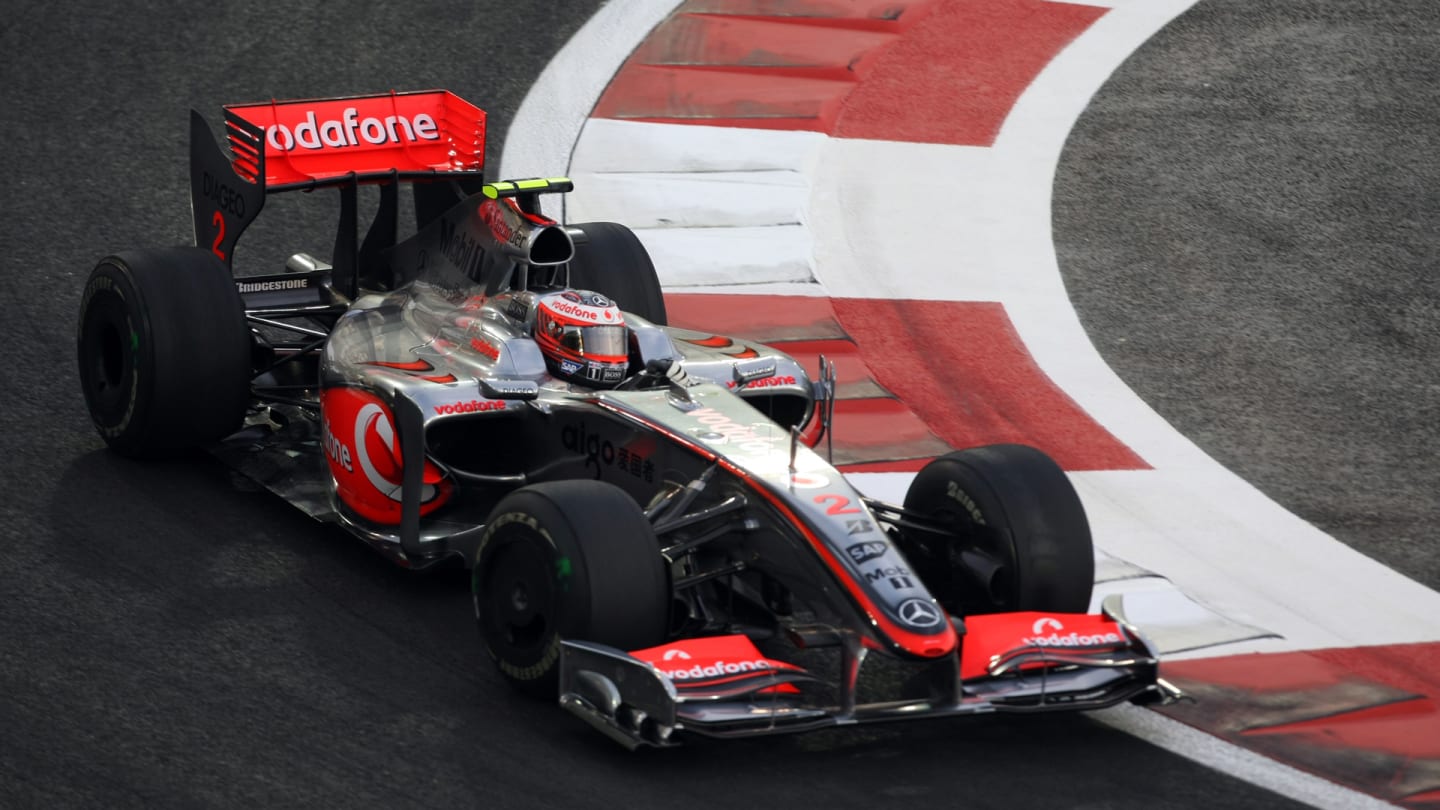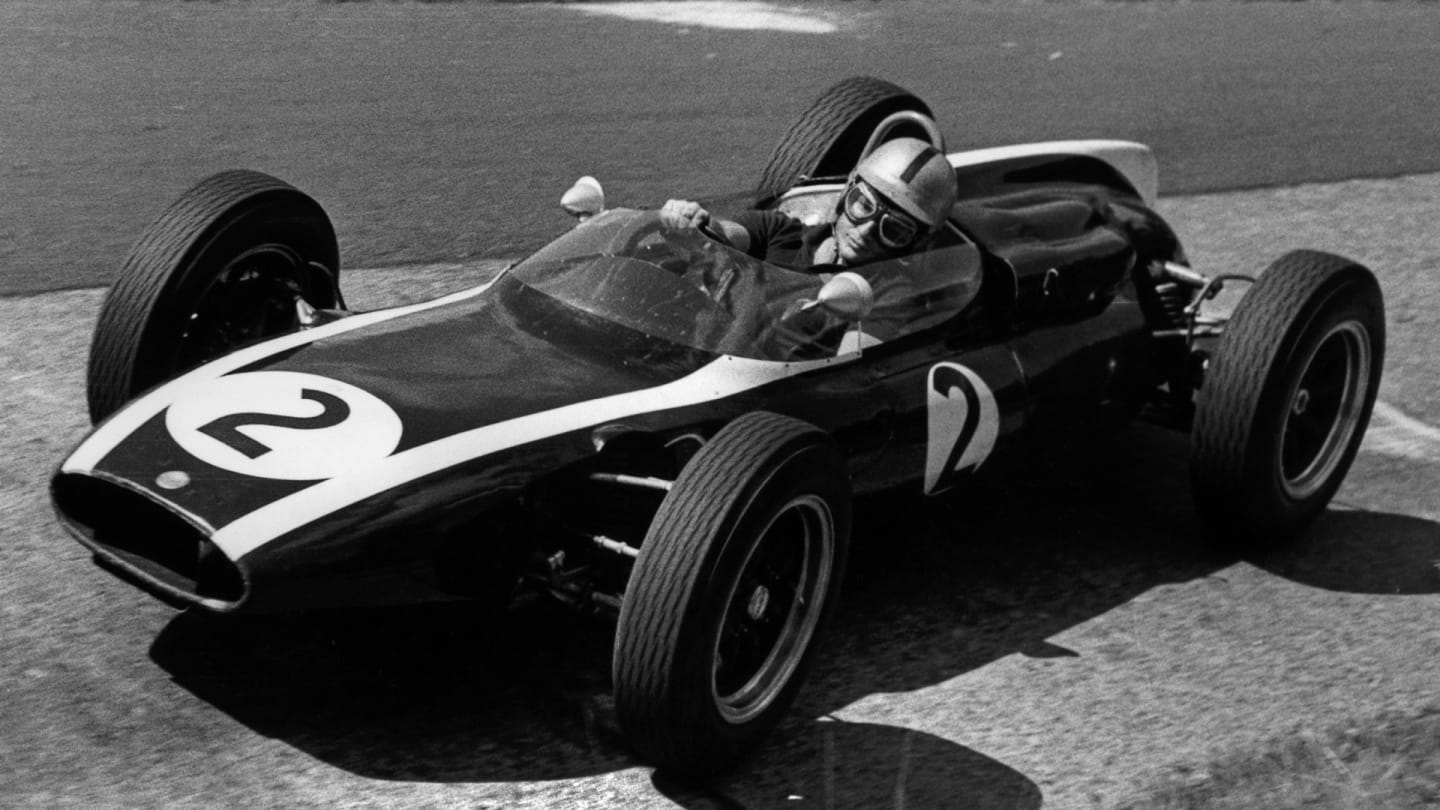
Feature
5 times F1 teams got the new regulations wrong
Share

Every team is excited by new Formula 1 regulations because of the opportunity to do a better job than their rivals. But with potential reward also comes risk, meaning that performance levels can go down as well as up.
Many times in F1 history, regulation changes have created the conditions for championship winners to get things badly wrong, leaving them playing catch-up under the new rules.
Here are five occasions when a team slipped backwards after getting the rule changes wrong.
READ MORE: 5 times F1 teams got the new regulations right
Red Bull-Renault RB10 (2014)
After taking four consecutive drivers’ and constructors’ championship doubles with Sebastian Vettel from 2010-2013, Red Bull crashed back down to earth in 2014.
Although they did win three races with the Red Bull RB10, all of these were on days when dominant Mercedes dropped the ball. This was a spectacular fall. It was primarily the consequence of the change from 2.4-litre V8s to 1.6-litre V6 turbo-hybrid engines. While Mercedes aced this change, Red Bull stumbled – primarily because of engine supplier Renault’s struggles.
WATCH: 10 moments of brilliance from four-time champion Sebastian Vettel

Sebastian Vettel was the last driver, until Max Verstappen in 2022, to campaign with the #1 on his car as defending champion
The car itself, despite rule changes also impacting the chassis, carried over much of the previous year’s aero philosophy and performed well in the corners. But what it lacked was power and reliability.
During testing, Red Bull racked up just 1,063 miles over 12 days, which was partly down to engine problems but also a result of the bodywork repeatedly catching fire. During testing, the sound of grinding could usually be heard behind the closed Red Bull garage door.
There was a litany of engine problems, with changes required both to the MGU-K and MGU-H – although later in the season the ERS system started to perform better. The power unit package also had a high cooling requirement – and any airflow harnessed for cooling can’t be used for downforce generation.
It was a difficult year and the start of a tough period for Red Bull.

Red Bull's struggles became apparent during pre-season testing
McLaren-Mercedes MP4-24 (2009)
In 2008, the McLaren versus Ferrari World Championship fight famously went down to the wire in the Brazil season finale. Lewis Hamilton won the drivers’ title for McLaren, with Ferrari taking the constructors’ title – but the following year both struggled.
It was McLaren that dropped the ball in the biggest way in 2009. In the first eight races of the season, even Hamilton could only drag the MP4-24 into the top 10 in qualifying three times. The race results were a little better, but McLaren were way behind – and not just because they missed the controversial double diffuser, which they introduced their version of in the fifth race of the season in Spain.
READ MORE: From DAS to the double diffuser: 5 F1 innovations that caught rival teams napping

The MP4-24 would see McLaren fail to score over five consecutive races and finish third in the standings
Initially, the McLaren was as much as three seconds off the pace thanks to miscalculating the downforce levels achievable under the new ‘skinny’ aerodynamic regulations. McLaren also retained the inwash aero philosophy, airflow between the front tyres, despite the widening of the front wing meaning outwash was the correct philosophy.
Having only scored 13 points in the first half of the season, an upgrade introduced for race nine at the Nurburgring – one that changed the endplates to outwash among other changes – transformed the car into a genuinely competitive proposition.
Hamilton was able to win in Hungary and Singapore as McLaren recovered to third, but the time spent wallowing in the midfield meant there was never any chance of winning the championship.

McLaren's second and final win of 2009 would come courtesy of Lewis Hamilton in Singapore
Ferrari F2005 (2005)
Michael Schumacher and Ferrari’s dominance of Formula 1 came to a juddering halt in 2005, with their only victory coming in the United States Grand Prix that just six cars started. This was primarily because of a change to the tyre regulations.
A late decision was made to ban tyre changes during races (except for in cases of punctures), which was bad news for the Bridgestone runners. Ferrari, which had built a close and hugely successful relationship with their tyre suppliers, therefore suffered in the pit stop-less races.
Bridgestone favoured a stiffer sidewall construction, generating tyre temperatures requiring them to run harder compounds compared to rivals Michelin, which had more compliant tyres and therefore more grip. With a single rule change, a Ferrari strength had been reversed into a weakness, given their rivals at the front all ran Michelin rubber.
READ MORE: How the Renault R25 finally ended Ferrari's dominance and delivered Alonso's first title

F2005 was dubbed the "best ever Ferrari Formula 1 car" at launch but saw the Scuderia fall to third overall, with just one win
While the tyre regulations were the main problem, there were others. In a bid to cut speeds, there were also aerodynamic tweaks raising the front wing, moving the rear wing forward, reducing the diffuser height and cutting the bodywork in front of the rear wheels. The diffuser change was particularly significant, as it put greater emphasis on the central section and forced Ferrari to redesign their gearbox, diverting resources that could have been spent on better integrating the rear suspension with the modified diffuser.
Having contested the first two races with an adapted 2004 car, the F2005 appeared at Imola and Ferrari ultimately ended up a distant third in the championship.
READ MORE: From Mario Andretti to Lewis Hamilton – 5 dynasty-ending championship wins
Fernando Alonso fights Michael Schumacher at San Marino 2005
Williams-Renault FW16 (1994)
After dominating the previous two seasons, everyone expected Williams still to be the team to beat in 1994. But the ban on electronic ‘gizmos’, including traction control, active suspension and anti-lock brakes, hit Williams harder than expected.
Their previous cars, the Williams FW14B of 1992 and the following year’s FW15C, had been designed around active suspension. This allowed control of the ride height to hold the car in a position where it worked best aerodynamically. Passive suspension meant this control was lost and revealed problems that hadn't been encountered previously.
The FW16 was an evolution of its predecessors, which was logical given the aero regulations hadn’t changed significantly – although refuelling had been reintroduced.
READ MORE: Exploring the technological wizardry behind Williams' legendary FW15C

The loss of active suspension hurt Williams' chances in 1994
But having to run passive suspension exposed a weakness when the front wing got close to the ground. This angled the car forward, meaning the leading edge at the front of the sidepod was too close to the ground at times and caused what Williams aero genius Adrian Newey later described as a “violent and catastrophic stall”. The solution, once the cause of the stall was identified, was to shorten the sidepods.
While Damon Hill almost won the drivers’ championship, the car was difficult to drive at the start of the season and only Ayrton Senna’s brilliance hauled it onto pole position for the first three races prior to his tragic death at Imola.
Michael Schumacher won the drivers’ championship for Benetton, although Williams did at least salvage the constructors’ title.

Senna lost his life behind the wheel of the FW16 at Imola
Cooper-Climax T55 (1961)
Cooper ruled the roost with the engine behind the driver in 1959-60 with the T51 and its successor the T53. But designer Owen Maddock’s ‘slimline’ T55 design (below), very much an evolution of its predecessor, was a well-balanced machine that simply lacked the power to be a world championship threat. This was thanks to the change from 2.5-litre to 1.5l engines, which also allowed Ferrari to jump to the front with the legendary ‘Sharknose’.
READ MORE: 7 incredible season openers from each decade of F1

Cooper won the 1959 World Championship, dominated to win again in 1960, but slumped to fourth overall in '61
Cooper had to use a four-cylinder Coventry Climax engine for much of 1961 while waiting for the new V8 version. It gave away around 35bhp to the Ferrari engine, a big percentage of the available power, but when the V8 engine did appear at the German Grand Prix, only for Jack Brabham, it wasn’t as potent as expected and proved unreliable.
Cooper managed just one top-three finish in 1961’s eight races, with Bruce McLaren taking third in the four-cylinder car at Monza.
Everything you need for the 2022 Formula 1 season
- DIARY DATES: The 2022 F1 calendar and F1 car launch schedule
- WATCH: Everything you need to know about the new 2022 F1 car
- 2022 F1 GRID – All the drivers and teams racing this season
- 10 things every Formula 1 fan should be excited for in 2022
- 5 bold predictions for the 2022 season – but how many will come true?
YOU MIGHT ALSO LIKE
News 'He’s an extremely fast driver’ – Gasly assesses whether former team mate Tsunoda can succeed in ‘complicated’ Red Bull opportunity
News Leclerc admits double disqualification ‘hurt’ Ferrari as Hamilton left ‘100% confident’ team can fix any problems

Video MUST-SEE: Behind the scenes of how the driving sequences for Apple Original Films' 'F1' movie were shot

Video WATCH: Ride onboard as Piastri set the fastest Friday lap at Suzuka


